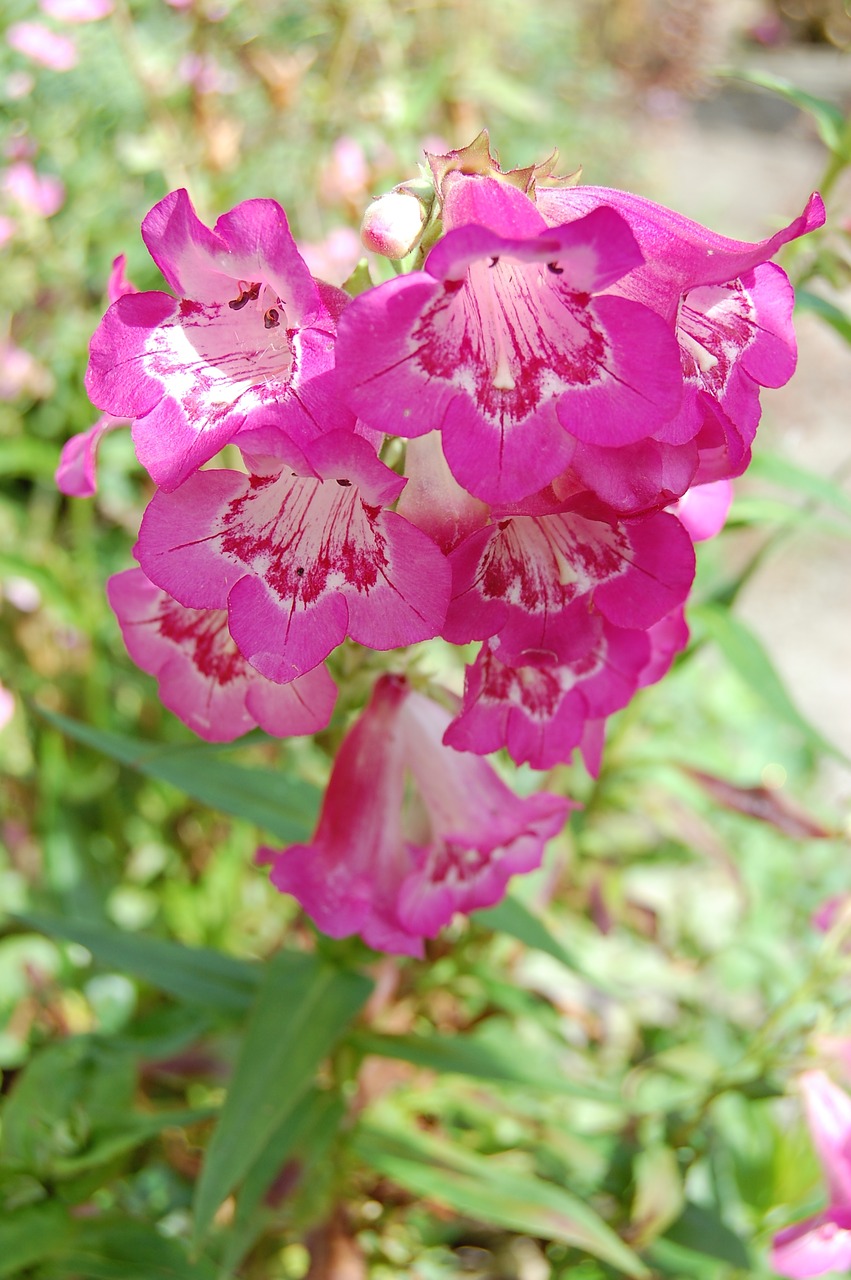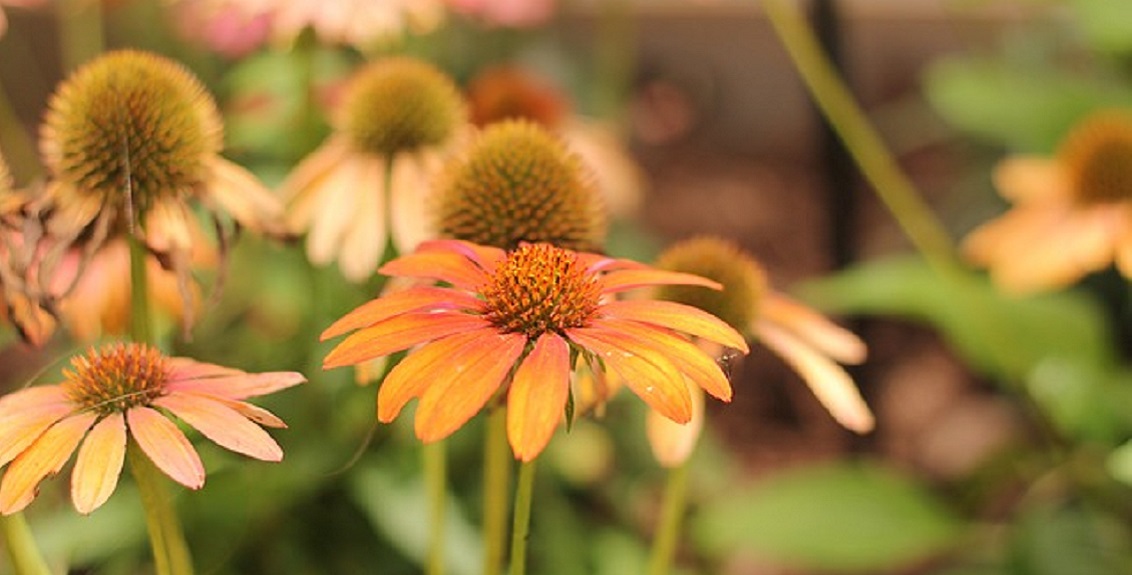Perennial plants and flowers make a garden look better and better with age. Perennials are ornamental plants that do not die after one season of growth. There is a perennial that is perfect for almost any soil or sun condition and here we have some of the best perennials for your garden. For shady gardens consider different types of perennials such as Ferns, Hostas and Coral Bells. For sunny gardens consider Purple Cone Flowers, Black-Eyed Susan and Daylilies. There are perennials that display colourful blooms and others that provide beautiful foliage. Your choice of perennials depends on what ‘hardiness zone’ you live in so make sure you check the plant’s label to be sure that it is hardy for your area.
More Information About Perennials
Sedums look good from the moment they emerge from the soil in spring and continue to look fresh all growing season long.
Many are attractive even in winter when their foliage dies and is left standing. They’re also drought-tolerant and need very little if any care. Additionally, they are beneficial to butterflies and bees.
The tall varieties are outstanding for cutting and drying. There are two plant types of sedum: Tall varieties topping 2 feet to low-growing groundcovers that form mats. All thrive in full sun with good drainage.

Growing Info:
Light: Sun,Part Sun ~ Zones: 3-10 ~ Height: 2-24 inches tall, depending on variety ~ Width: 6 inches or several feet wide, depending on variety ~ Blooms midsummer to autumn, depending on variety
Uses: Containers, Beds & Borders, Slopes, Groundcover
Heuchera, also known as Coral Bells is a front-of-the-bed favourite that offers a multitude of charms. Chief among them is the crinkly multicoloured foliage.
The variety ‘Purple Palace’ is especially noteworthy for its deep purple leaves.
The tiny flowers grow on stalks above the leaves and appear in late spring.
Coral bells like sun or partial shade.
Heuchera are an American genus with lobed leaves and tiny, bell-shaped flowers on wand like stems.
Heuchera make themselves at home in moist but well-drained, organic-enriched soils.
Uses: Containers, Beds & Borders
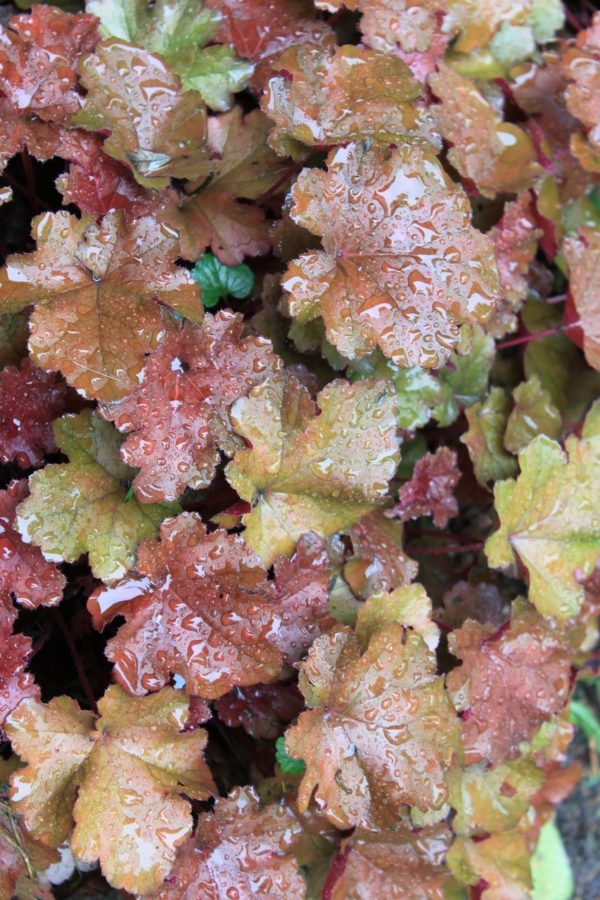
Blanket flower (Gaillardia) is a drought- and heat-tolerant perennial wildflower that provides long-lasting colour in a sunny border with poor soil.
In red, gold, or brown, its daisy-like, 3-inch wide, single or double flowers bloom through the summer and into the fall.
Although often short-lived, it is easy to grow and will flower the first year from seed.
Blanket flowers are wonderfully cheerful, long-blooming plants for hot, sunny gardens.
They produce single or double daisy flowers through most of the summer and well into fall.
The light brick red ray flowers are tipped with yellow — the colours of Mexican blankets.

Blanket flowers tolerate light frost and are seldom eaten by deer. Deadhead the flowers to keep them blooming consistently through the summer and into fall. Some species tend to be short-lived, especially if the soil is not well drained.
Growing Info:
Light: Sun ~ Zones: 3-11 ~ Height: 1-3 feet tall ~ Width: 6 inches to 2 feet wide
Uses: Containers, Beds & Borders, Groundcover
Easy and undemanding, veronicas catch the eye in sunny gardens over many months.
Some have loose clusters of saucer-shaped flowers, others have tubular flowers in tall spikes.
A few veronicas bring elusive blue to the garden, but more often the flowers are purplish or violet blue, rosy pink, or white.
Provide full sun, average well-drained soil and plant veronica at the front of the bed.
Regular deadheading extends bloom time.
Growing Info:
Light:Sun,Part Sun ~ Zones:3-11 ~ Height:4-48 inches tall, depending on variety ~ Width:8 inches or indefinitely wide, depending on variety ~
Blooms early spring, summer, to late autumn, depending on variety
Uses: Containers, Beds & Borders, Groundcover
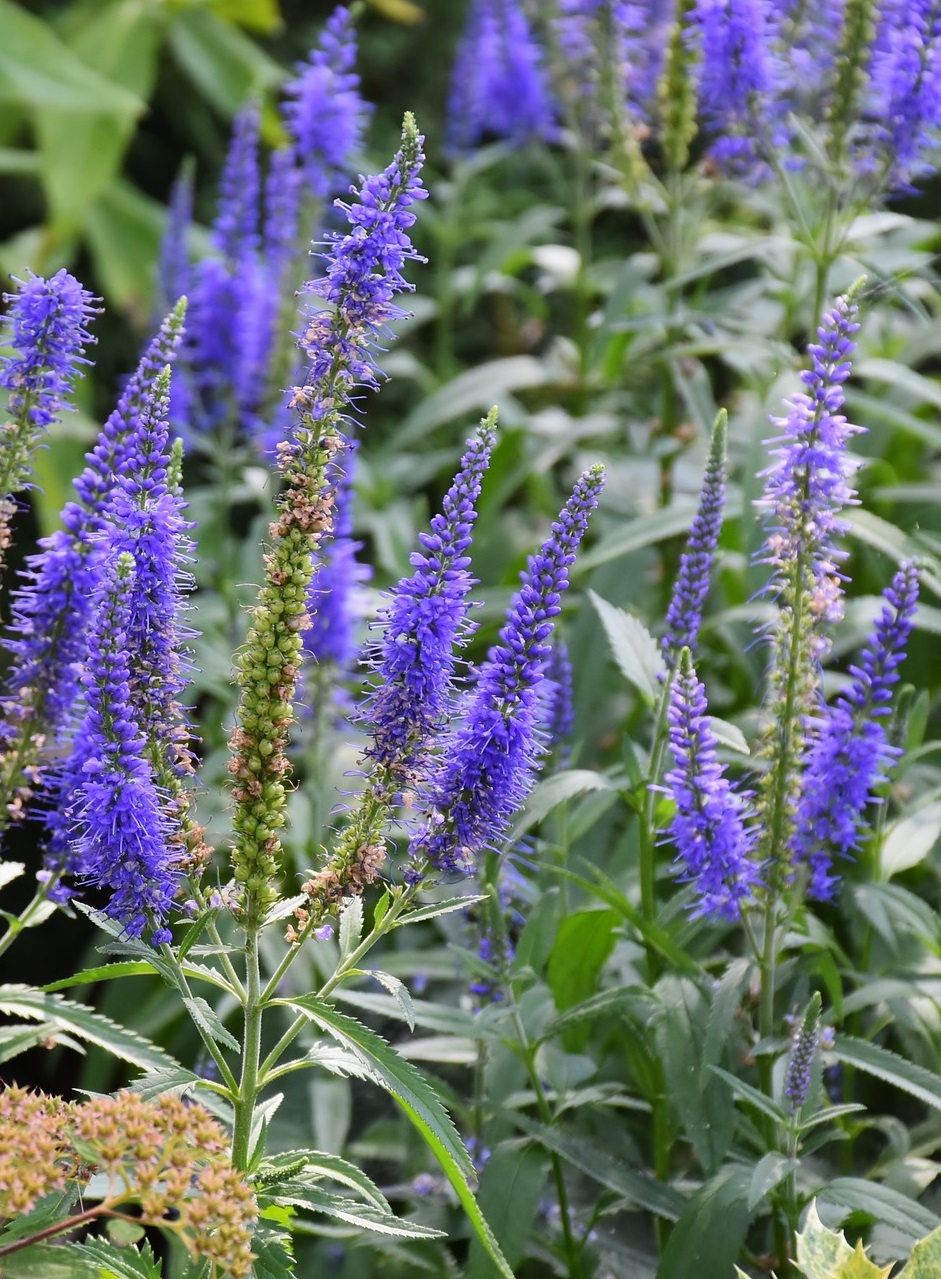
Phlox paniculata grows 3 to 4 feet tall and bears large trusses of fragrant flowers from summer to early autumn. It’s an old-fashioned favourite that has few rivals for its colour and sweet fragrance.
It is well suited to the back of the garden and cottage gardens. There are several different kinds of phlox.
Garden and meadow phlox produce large panicles of fragrant flowers in a wide assortment of colours – they add height and charm to a border.
Low growing wild Sweet William, moss pinks, and creeping phlox are effective as ground covers, at the front of the border, and as rock and wild garden plants, especially in light shade.
Phlox need moist soil for best overall health.
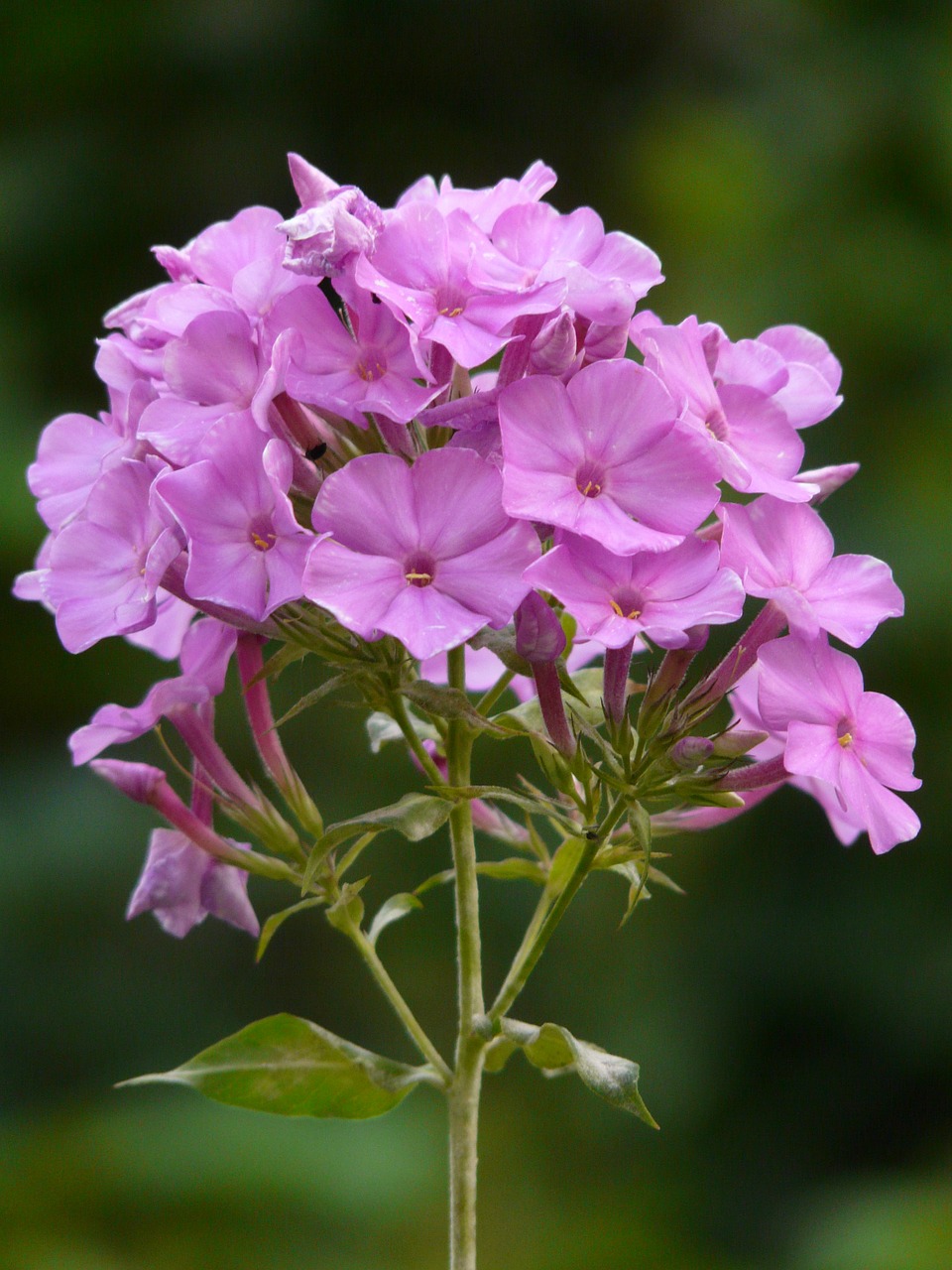
Growing Info:
Light: Sun,Part Sun ~ Zones: 4-8 ~ Height: 8-48 inches tall, depending on variety ~ Width: 6-36 inches wide, depending on variety ~ Blooms spring and summer, depending on variety
Uses: Containers, Beds & Borders
Suited to larger gardens, this 3-foot-wide by 5-foot-tall perennial creates clouds of blue flowers in late summer. Russian sage likes sun, and is tolerant of drought and heat. Plant it at the back of the bed and give it room to grow.
With its tall wispy wands of lavender or blue flowers and silvery foliage, Russian sage is an important player in summer and autumn gardens. It shows off well against most flowers and provides an elegant look to flower borders. The aromatic leaves are oblong, deeply cut along the edges. Foot-long panicles of flowers bloom for many weeks. Excellent drainage and full sun are ideal, although very light shade is tolerated. Plant close to avoid staking since the tall plants tend to flop.
Growing Info:
Light: Sun ~ Zones: 4-9 ~ Height: 3-5 feet tall ~ Width: 2.5-3 feet wide ~ Blooms midsummer into autumn, depending on variety
Uses: Containers, Beds & Borders, Privacy
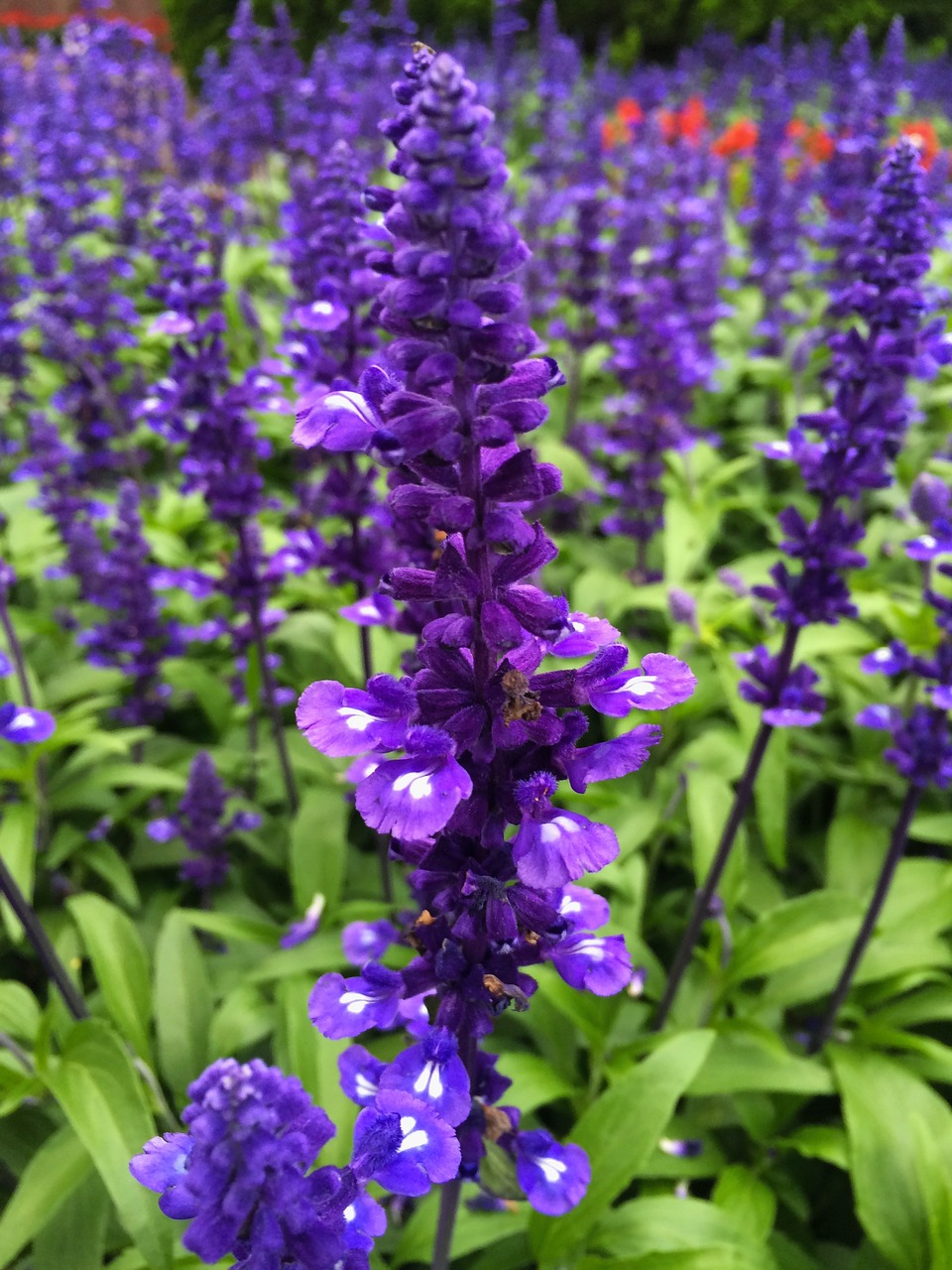
Hybrid perennial sage, a relative of the herb garden favourite, combines 18-inch spikes of blue, purple, or white flowers with attractive gray-green foliage.
Plant sage in the front or middle of the border in a sunny spot.
There are hundreds of different types of salvias, commonly called sage, but they all tend to share beautiful, tall flower spikes and attractive, often gray-green leaves.
They are valued for their very long season of bloom, right up until frost. Not all not hardy in cold climates, but they are easy to grow as annuals.
Sages carry dense or loose spires of tubular flowers in bright blues, violets, yellow, pinks, and red that mix well with other perennials in beds and borders.
Provide full sun or very light shade, in well-drained average soil.

Growing Info:
Light: Sun,Part Sun ~ Zones: 3-10 ~ Height: 1-8 feet tall, depending on variety ~ Width: 8-36 inches wide, depending on variety ~
Blooms early summer through to autumn, depending on variety
Uses: Containers, Beds & Borders
Asters can grow to 5 feet, depending on the species, and are excellent for beds and borders as well as for cutting to bring indoors.
Asters get their name from the Latin word for “star,” and their flowers are the superstars of the autumn garden.
Some types of this plant can reach up to 6 feet with flowers in white and pinks but also, perhaps most strikingly, in rich purples and showy lavenders.
You can extend the season by growing some of the summer bloomers, as well. Some are naturally compact; tall types that grow more than 2 feet tall benefit from staking or an early-season pinching or cutting back by about one-third in July or so to keep the plant more compact.
Growing Info:
Light: Sun ~ Zones: 3-9 ~ Height: 1-5 feet tall ~ Width: 1-4 feet wide
Uses: Containers, Beds & Borders

The feathery plumes of astilbe rise above fernlike foliage for a month or more in late spring and early summer.
Available in shades of pink, white, and red, astilbe is ideal for shady, moist spots.
Astilbe bring a graceful, feathering note to moist, shady landscapes, however, the leaves will scorch in full sun.
Feathery plumes of white, pink, lavender, or red flowers rise above the finely divided foliage from early to late summer depending on the variety.
Astilbe will spread slowly over time where they are well-situated.
Growing Info:
Light: Part Sun,Shade ~ Zones: 4-8 ~ Height: 6-40 inches tall ~ Width: 18-30 inches wide
Uses: Containers, Beds & Borders, Groundcover
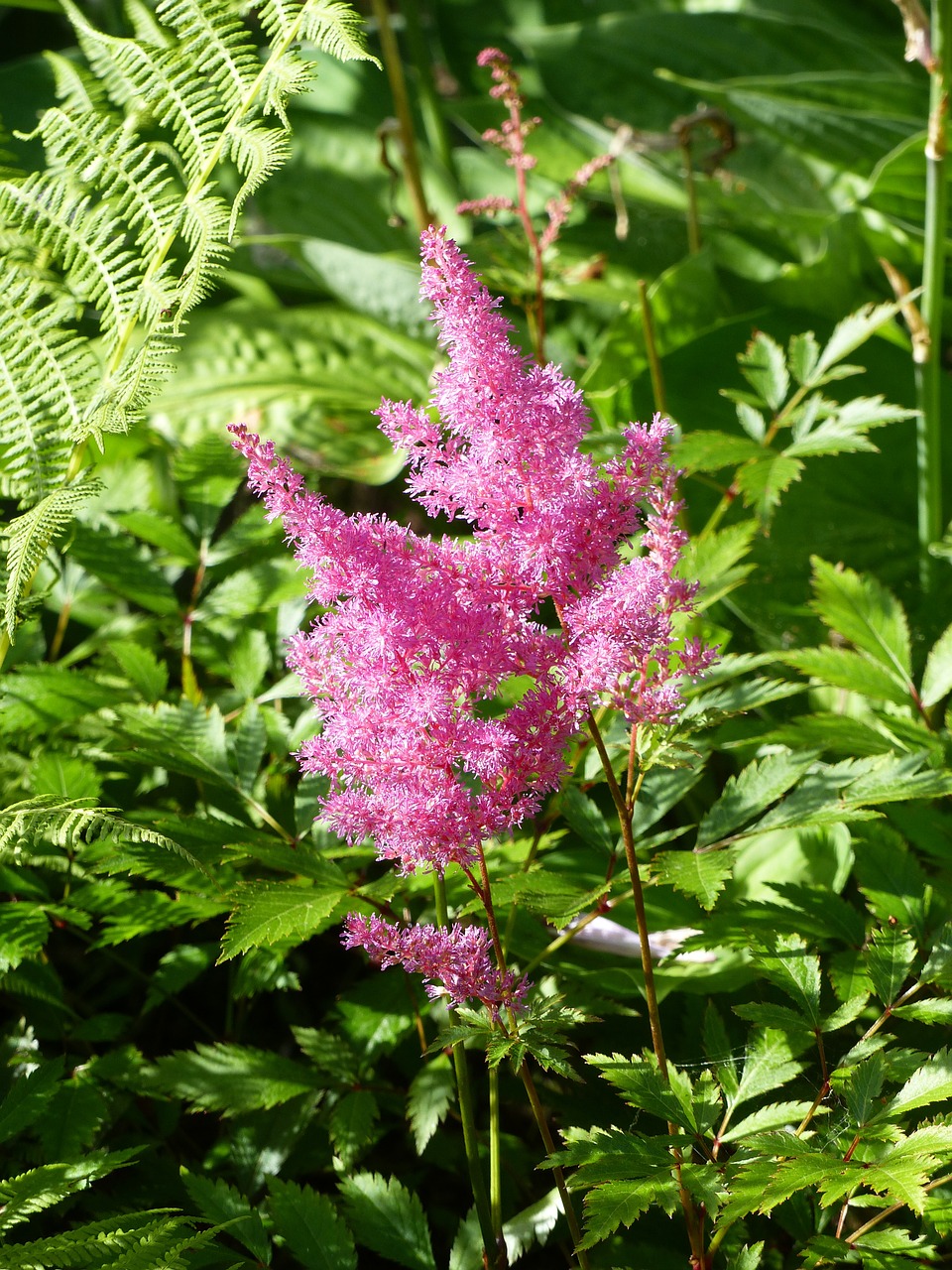
Coneflower tolerates heat and drought, and it blooms all summer long. Plant this 30-inch-tall beauty in the middle or back of the bed.
Purple coneflower is so easy to grow and attractive and draws so many birds and butterflies that you simply must grow it, if you have the room.
Valued for its large sturdy daisy like flowers with dropping petals it will spread easily in good soil and full sun.
It is bothered by few pests or diseases and it’s a great cut flower.
Birds bees and butterflies love it. Allow the flowers go to seed and the goldfinches will love you, coming to feast on the seeds daily.
Growing Info:
Light: Sun ~ Zones: 3-9 ~ Height: 2-4 feet tall ~ Width: 1-2 feet wide
Uses: Containers, Beds & Borders

A lovely North American native prairie grass, switchgrass offers the garden beauty and easy maintenance.
Varieties grow from 2 to 6 feet tall and have airy, cloudlike plumes. Some varieties have rich red or purple foliage in autumn.
In late summer, lightly branched panicles of spikelets (flowers) appear above the foliage, presenting an airy picture.
In autumn, the foliage often takes on dramatic red, yellow, or gold tones.
Provide average, well-drained soil in sun or very light shade for best results.
Growing Info:
Light: Sun ~ Zones: 5-9 ~ Height: 2-5 feet tall ~ Width: 9-42 inches wide ~ Blooms late summer and into autumn, depending on variety
Uses: Containers, Beds & Borders, Slopes, Groundcover
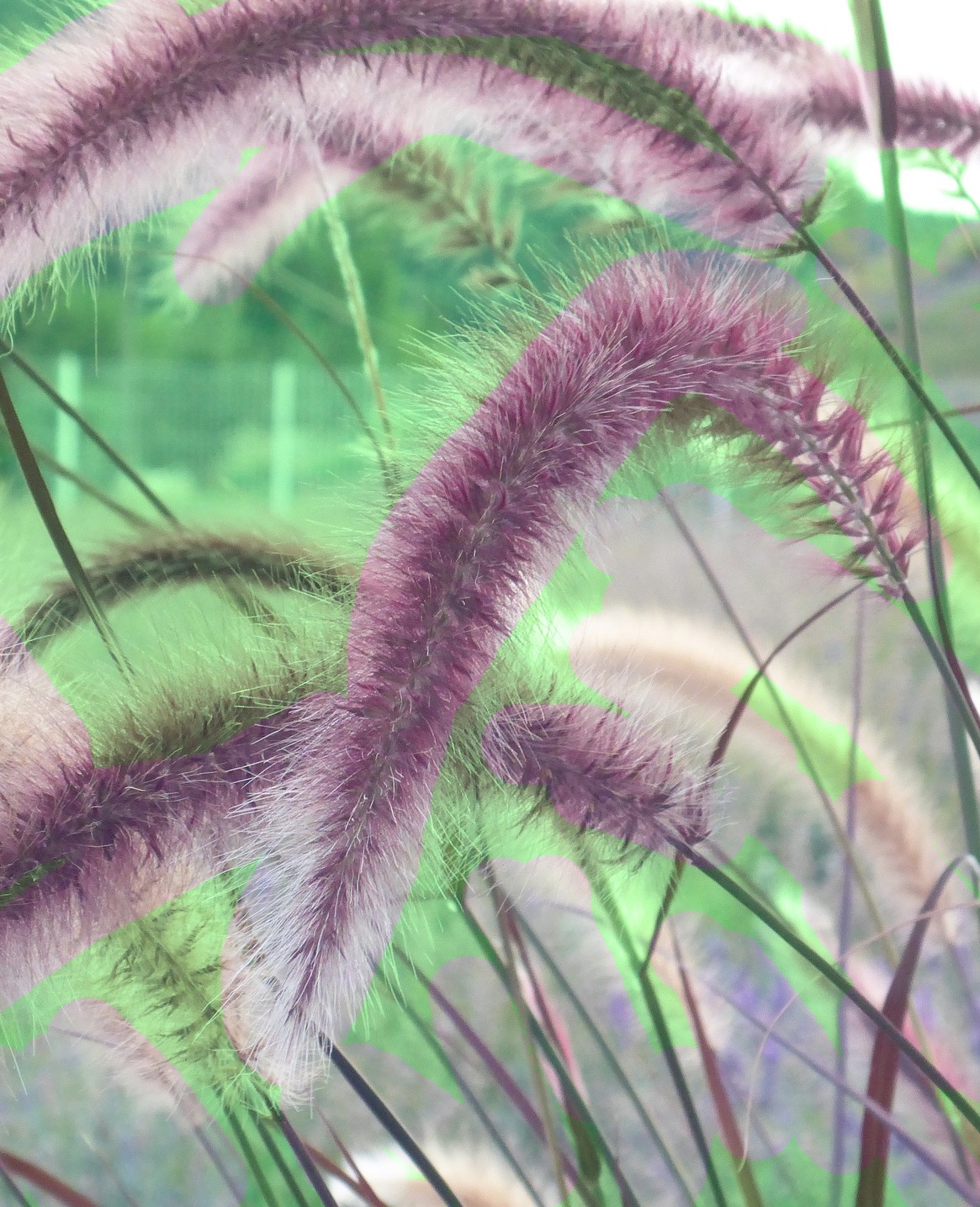
Even if you’ve never gardened before, you can grow yarrow with little effort.
Yarrow is an amazing perennial that is hardy and can withstand heat, drought, and cold.
Yarrow is one of those plants that give a wildflower look to any garden. It is easy to care for and it will thrive with almost no care. Its colourful, flat-top blooms rise above clusters of ferny foliage.
If deadheaded after its first flush of blooms fade, yarrow will rebloom.
If left to dry on the plant, flower clusters of some types provide winter interest.
Flowers of yarrow are excellent either in fresh or dried arrangements.
Growing Info:
Light: Sun ~ Zones: 3-10 ~ Height: 6-60 inches tall ~ Width: 18-36 inches wide ~ Blooms spring, summer, and autumn depending on variety
Uses: Containers, Beds & Borders, Slopes, Groundcover
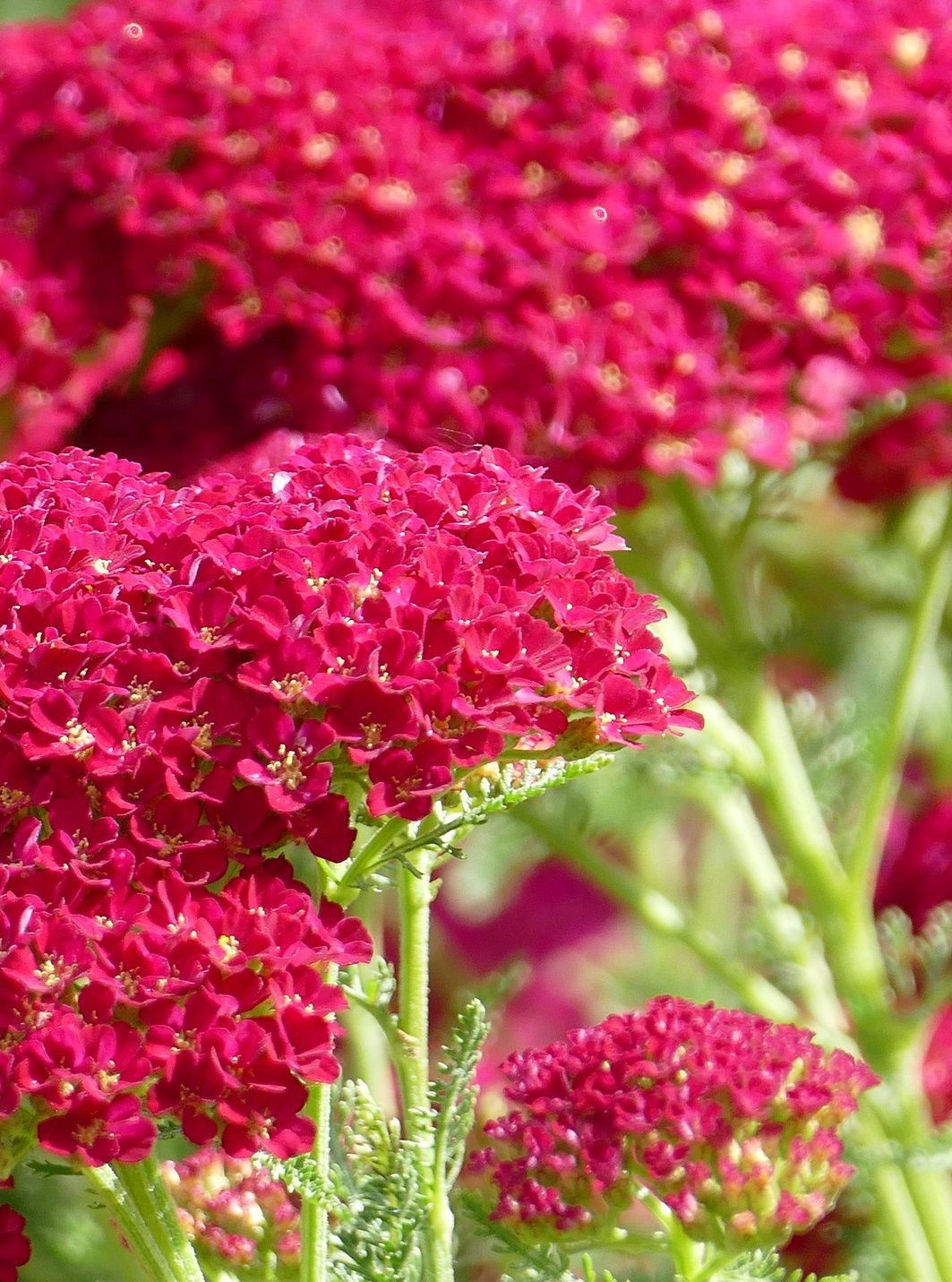
Often sweetly fragrant, the peony is a very long-lived plant that forms 2- to 4-foot-tall clumps in shrub like bunches. Its numerous varieties offer a wide range of colours, almost every shade except blue and blooming periods from late spring to early summer.
Herbaceous peonies belong in almost every garden. The foliage is usually dark green and remains good-looking all season long.
Provide deep rich soil with plenty of humus to avoid dryness, and don’t plant the crowns more than 2 inches beneath the surface.
Where well suited to the climate, they can thrive on zero care.
Growing Info:
Light: Sun,Part Sun ~ Zones: 3-8 ~ Height: 2 to 3-1/2 feet tall, depending on variety ~ Width: 2 to 3-1/2 feet wide, depending on variety ~ Blooms mid- to late spring, depending on variety
Uses: Containers, Beds & Borders

Coreopsis comes in a wide range of sizes and several colours.
The threadleaf varieties, like ‘Moonbeam’ and ‘Zagreb’, produce blankets of small daisy-like flowers all summer long in yellow or pink, with soft, ferny foliage.
One of the longest bloomers in the garden, coreopsis produces (usually) sunny yellow daisy like flowers that attract butterflies.
Coreopsis, depending on the variety, also bears golden-yellow, pale yellow, pink, or bicolour flowers.
It will bloom from early to midsummer or longer as long as it’s deadheaded.
Growing Info:
Light: Sun ~ Zones: 3-9 ~ Width: 1-3 feet wide
Uses: Containers, Beds & Borders, Groundcover
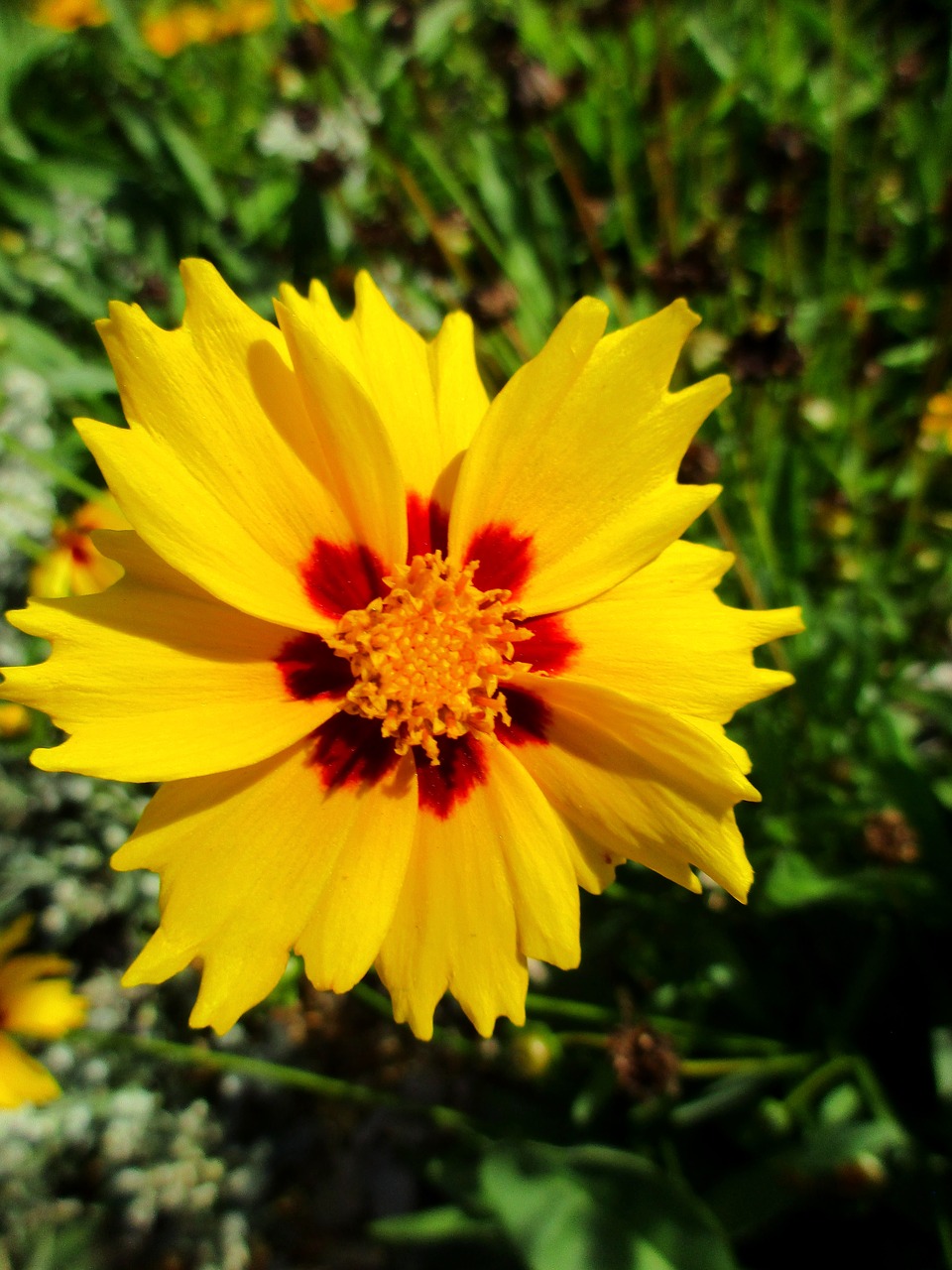
Pincushion flower, or scabiosa, has dainty blue flowers all summer and into autumn, making it one of the longest-lasting bloomers in the perennial bed.
It likes sun or partial shade, and is best at the front of the bed. They are as at home in cottage gardens as they are in more formal borders. Group several plants together for more impact.
The lavender blue, pink, or white flowers bloom over several weeks and are good for cutting.
Pincushion flowers must have good drainage and full sun. They like alkaline soil, so if yours tends to be acidic, add lime to raise the pH.
Growing Info:
Light: Sun ~ Zones: 3-11 ~ Height: 10-36 inches tall, depending on variety ~ Width: 9-24 inches wide, depending on variety ~ Blooms early summer to early autumn, depending on variety
Uses: Containers, Beds & Borders
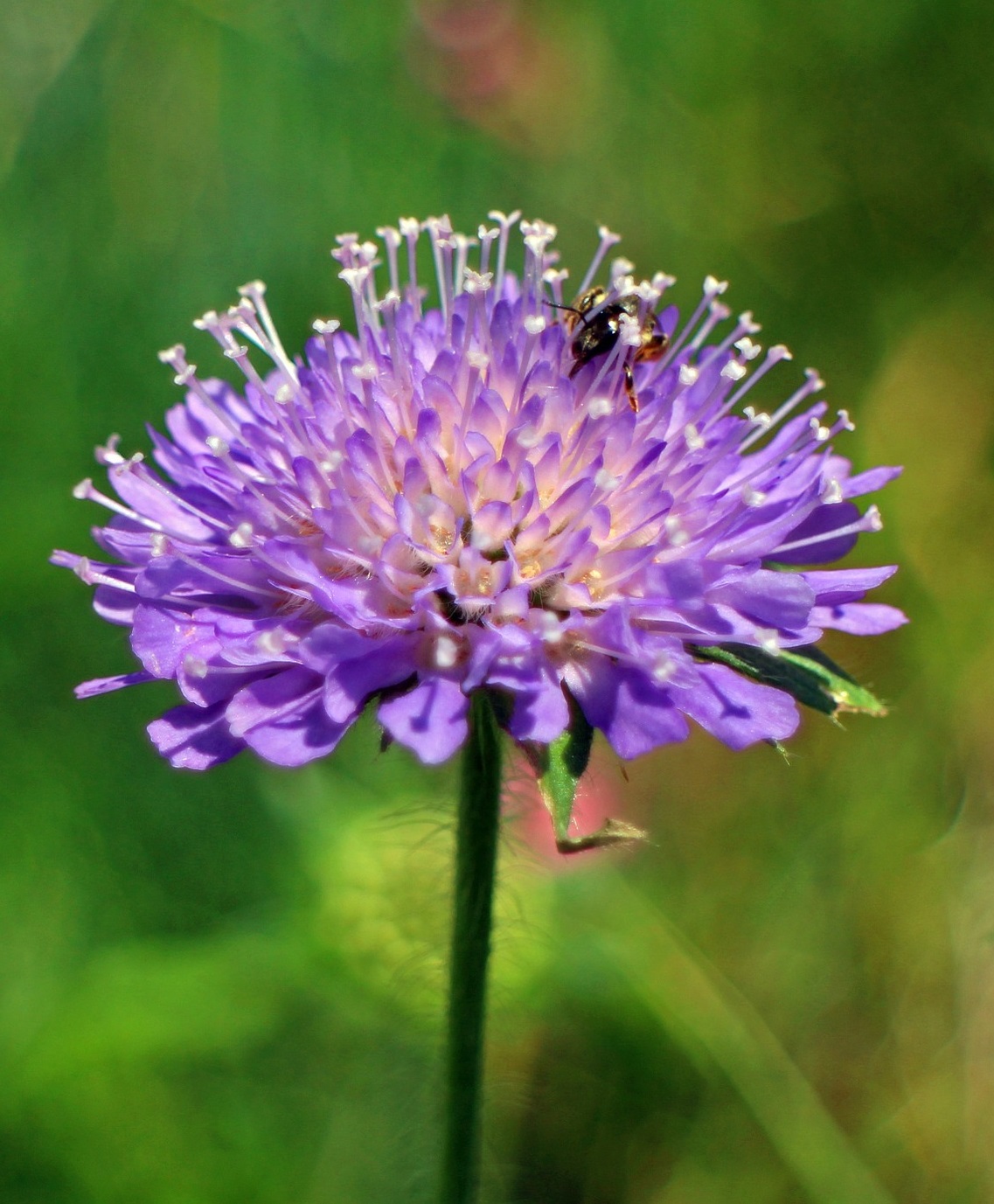
Penstemon produces attractive spikes of tubular flowers in pink, blue, lavender, white, or shades of red.
With long blooming with brilliantly coloured, tubular flowers, penstemons have been used in European gardens for decades.
There are many different penstemon types.
The leaves are lance-shaped or oval and sometimes purple-red.
Some species need very good drainage and won’t thrive during wet weather. However, many thrive in a wide variety of conditions. Just be sure to provide excellent drainage.
Mulch in areas where a type is marginally hardy.
Growing Info:
Light: Sun,Part Sun ~ Zones: 3-9 ~ Height: 8 inches-6 feet tall ~ Width: 8-20 inches wide ~ Blooms in late spring to late summer, depending on variety
Uses: Containers, Beds & Borders, Privacy, Slopes, Groundcover
